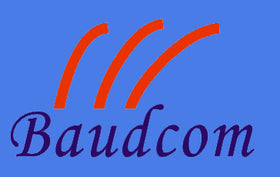In today’s digitally connected world, network infrastructure plays a crucial role in ensuring smooth communication and efficient data transmission. However, there are times when your network devices aren’t compatible with each other or when you need to bridge different types of media. This is where media converters come into play.
A media converter is a device that allows you to connect two different types of media (network cables or signals), enabling seamless communication between devices that would otherwise be incompatible. Media converters are incredibly useful in networking, especially when you're dealing with varying transmission types, distances, and data rates.
What is a fiber media converter?
A media converter functions as a bridge between two different types of network media, such as converting fiber optic to copper Ethernet, Ethernet to fiber, or other combinations of networking technologies. They allow businesses to extend their network infrastructure, improve efficiency, and enhance connectivity.
There are several types of media converters, each designed to handle specific types of media or network standards. Let’s explore the most common ones.

Learn more: what is a fiber media converter?
1. Ethernet to Fiber Media Converter
This is one of the most widely used types of media converters. It connects copper Ethernet cables (such as CAT5e, CAT6) to fiber optic cables (single-mode or multi-mode fiber).
Use Case:
· Extending fast Ethernet media converter networks over long distances (up to 80 kilometers or more).
· Providing a higher bandwidth connection, which is ideal for high-speed internet and data centers.
Benefits:
· Distance: Ethernet signals degrade over long distances, but fiber optic cables can carry signals for several kilometers without significant loss.
· Performance: Fiber offers greater bandwidth, ensuring faster and more reliable connections.
2. Fiber to Ethernet Media Converter
In this configuration, the converter works in reverse, transforming the signal from a fiber optic medium to fast Ethernet media converter. This is often used in scenarios where the core network is based on fiber, but the devices on the edge still use copper Ethernet connections.
Use Case:
· Connecting fiber-optic backbone networks to Ethernet devices or switches in remote offices or branches.
Benefits:
· Compatibility: It bridges the gap between the high-speed fiber backbone and older Ethernet-based equipment.
· Cost-effective: Converting fiber to Ethernet allows businesses to continue using existing Ethernet infrastructure.
3. Coaxial to Ethernet Media Converter
While less common today, coaxial to fast Ethernet media converter are still used in legacy systems that rely on coaxial cables for data transmission. These converters enable a smooth transition from old technologies to modern Ethernet networking.
Use Case:
· Upgrading older systems (such as those used in cable TV networks) to Ethernet.
Benefits:
· Legacy Support: Provides compatibility for older coaxial-based devices with modern Ethernet networks.
· Simple Transition: Allows businesses to extend the lifespan of existing infrastructure.
4. Gigabit Media Converters
Gigabit media converters support data rates of 1 Gbps or more, enabling faster and more efficient networking between devices.
Use Case:
· When you need to upgrade from 10/100 Mbps networks to gigabit speeds.
· Connecting high-performance devices, like servers and switches, to fiber-optic networks without compromising on speed.
Benefits:
· High-speed performance: Ideal for data-intensive applications, including video streaming, large file transfers, and cloud-based services.
· Scalability: Future-proof your network with high-speed conversions that support increasing data demands.
5. T1/E1 to Ethernet Media Converter
In legacy systems, T1 and E1 lines are often used to transmit data over long distances. These types of fast Ethernet media converter bridge the gap between the traditional T1/E1 lines and Ethernet-based networking.

Use Case:
· Connecting an Ethernet network to older T1/E1 infrastructures, commonly found in telecommunications and service provider networks.
Benefits:
· Telecom Compatibility: Allows businesses to interface with telecom providers using T1/E1 lines while utilizing Ethernet technology for internal networks.
· Cost-saving: It reduces the need for completely overhauling a network when transitioning to modern technologies.
6. Copper to Fiber Media Converter (for Industrial Networks)
In environments where electromagnetic interference (EMI) is a concern—such as manufacturing facilities or power plants—using copper cabling for long-distance transmission can cause issues. A copper-to-fiber converter solves this problem by converting signals from copper cabling to fiber optics, providing both distance and immunity from interference.
Use Case:
· Industrial environments, harsh environments, or locations where copper wiring is vulnerable to interference.
Benefits:
· Immunity to Interference: Fiber optics are immune to EMI, ensuring stable signal transmission even in noisy environments.
· Safety and Durability: Fiber cables are more robust and secure than copper cables, especially in environments with electrical hazards.

7. Media Converter with PoE (Power over Ethernet)
Media converters with Power over Ethernet (PoE) capabilities are designed to transmit both data and power to devices such as IP cameras, Wi-Fi access points, or VoIP phones through a single Ethernet cable. When integrated with fiber connections, these converters can extend PoE support over longer distances than standard Ethernet connections would allow.
Use Case:
· Enabling remote or hard-to-reach devices to receive both power and data over long distances via fiber-optic connections.
Benefits:
· Reduced Cable Clutter: Eliminates the need for separate power cables.
· Long-distance PoE: Extends the range of PoE-enabled devices by using fiber optics.

Conclusion: Why Media Converters Are Essential
The versatility and flexibility of media converters make them invaluable in today’s networked world. Whether you’re looking to extend your network’s reach, improve its speed, or integrate legacy systems with new technologies, a media converter can offer the perfect solution.
By choosing the appropriate types of media converter and understanding what is a fiber media converter, businesses can ensure their networks run efficiently, securely, and cost-effectively. Whether you’re converting Ethernet to fiber, extending the reach of your network, or integrating old and new technologies, media converters make it possible to meet the ever-growing demands of modern communication networks.
If you’re considering upgrading your network infrastructure or facing connectivity challenges, a media converter might just be the solution you need to achieve optimal performance and scalability.

